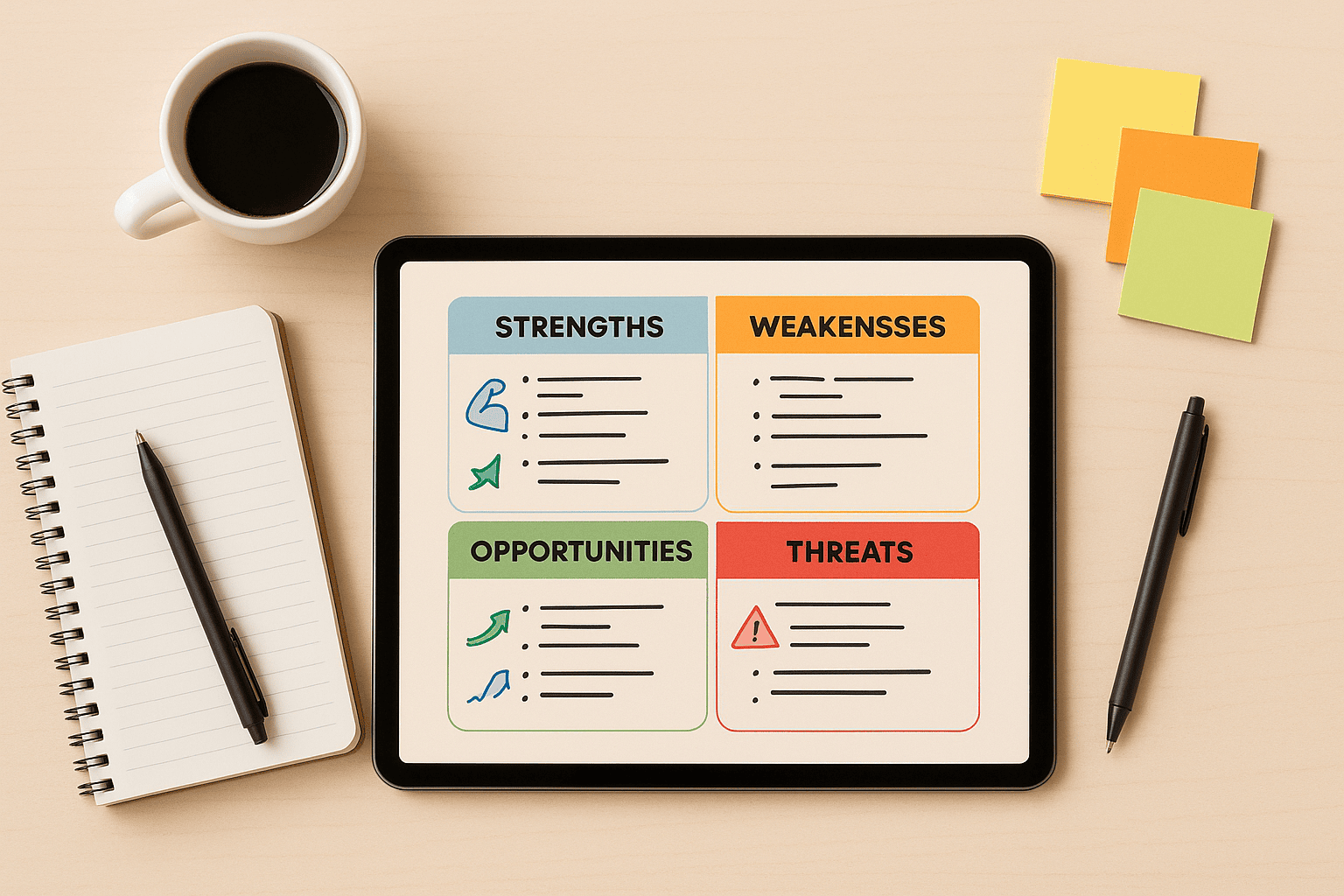SWOT Analysis
A strategic planning framework used to evaluate the Strengths, Weaknesses, Opportunities, and Threats involved in a business venture or project.

What is SWOT Analysis?
SWOT analysis is a strategic planning tool used by individuals and organisations to identify and evaluate their internal strengths and weaknesses, as well as external opportunities and threats. The acronym "SWOT" stands for these four key elements: Strengths, Weaknesses, Opportunities, and Threats, which together provide a comprehensive overview of where a business or project stands. By examining these factors, decision-makers can develop strategies that leverage strengths, address weaknesses, seize opportunities, and mitigate potential threats.
This analytical method is often used during the early stages of planning or when a company is undergoing change. It helps organisations align their resources and capabilities with the external environment in which they operate. For instance, strengths might include a loyal customer base or proprietary technology, while weaknesses could be outdated systems or a lack of skilled personnel.
What makes SWOT analysis especially valuable is its simplicity and versatility. It can be applied across industries and for a variety of purposes, from launching new products to evaluating business performance or even personal career planning. According to Harvard Business Review, when done thoughtfully, SWOT encourages critical thinking and honest assessment, laying the foundation for informed, strategic decision-making.
Why use SWOT Analysis?
SWOT analysis is a great way to gain a clear, overall picture of your situation—whether you're running a business, managing a team, or planning your next career move. It breaks down complex challenges into four simple areas, helping you see where you stand and where you can grow.
Here’s why it’s so useful:
- Clear insight: Helps you understand what you’re doing well and where you can improve.
- Easy to use: Doesn’t require special tools - just brainstorming and honest thinking.
- Improves focus: Helps prioritise the most important goals and strategies.
- Adaptable: Works for businesses, teams, or personal planning.
- Encourages strategy: Supports smarter, more thoughtful decision-making.
Whether you're launching a product, setting yearly goals, or trying to improve performance, SWOT gives you a practical starting point. It’s especially helpful for seeing things from different angles and making sure your plans are based on facts, not guesswork.
When to use SWOT Analysis?
here’s no bad time to use a SWOT analysis, but it’s especially helpful during big decisions or changes. It gives you a moment to pause, look at the big picture, and make more confident choices.
Best times to use SWOT:
- Planning a new project or product
- Starting a business or entering a new market
- Reviewing business performance
- Making big changes or solving problems
- Preparing for a job interview or career change

You can also make SWOT a habit - something you review every quarter or year to stay on track. It’s simple enough to repeat and powerful enough to give fresh insights every time.
Pros and Cons of SWOT Anlaysis
SWOT Analysis on My Startup Studio
stay tuned
Frequently Asked Questions
Not at all - it's useful at any stage. Even mature companies revisit SWOT regularly to navigate change and growth.
Yes, our SWOT analysis tool can be generated automatically. The system leverages all available information about your business and idea to generate the result.
Yes, each analysis is autosaved and stored under your the history of the tool. You can easily compare, or leverage past versions.
It depends on when you trigger it. If you expand on your business details between each generation, then it will be different. If you don't change anything, then it will be comparable
Related tools

Your startup’s Swiss Army knife.
Everything you need to go from idea to execution — faster than ever. Validate, launch, and grow with one powerful app.
